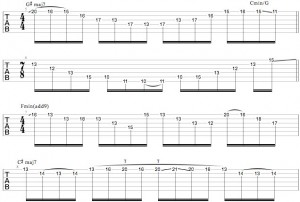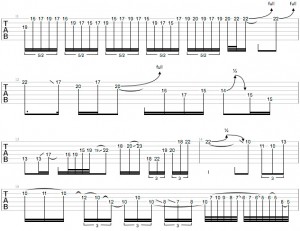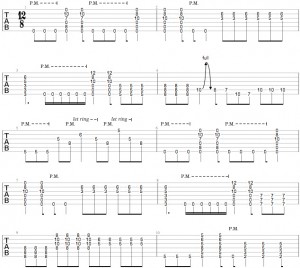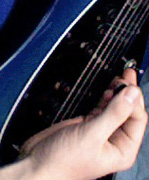Hey everyone! I’m David – guitar player, composer and producer for the band Destiny Potato. In this lesson I will show you the tuning that I use on my 6-string guitar along with some useful tips on how to create/compose interesting sounding riffs. I’ll also be playing a small solo section from my instrumental song ‘Bilo: part III’ from my upcoming EP Bilo at the end.
GUITAR TUNING
Since I’ve never had access to a 7-string guitar, I’ve adapted the tuning of a 6-string to give me access to the lower notes I want to use in my riffs. The tuning I use is an open chord tuning (Ab(9) power chord or Absus2) and it’s great for heavy riffs, open chords and creating cool jumps and crazy tapping licks, since everything is pretty symmetrical on the fretboard.
The tuning is: Ab Eb Ab Eb Ab Bb
String gauges are: 60 46 36 26 17 13
COMPOSITION: CHORDS
I’m going to break down the riff from 04:17 – 04:45 in the song ‘Bilo: part III’ to demonstrate the construction of a heavy riff that involves some interesting harmonies/tensions, tricky rhythms and a groove. We’ll start with the chord progression and then layer the other parts over it. The progression begins as:
Bbmin7(11) – Bbb5(9) or C7/Bb – Bbmin7 – Gbsus2 – Absus2 – Esus2.
It then repeats with some variations:
Bbmin7(11) – Bbb5(9) or C7/Bb – Bbmin7(11) – Ebmaj(add11) – Gbsus2 – Absus2 – Asus2.
The harmonic rhythm of this progression leaves some space during the full chords that will give us more freedom when we’re composing the single-note riffs, and then picks up during the power chord sections.
Bilo – Chords

COMPOSITION: RHYTHMS
Once we are done with the chord progression, we need to move on to the rhythm part of the riff.
I usually use either a kick drum sample or the root notes of the chords, but for the sake of demonstrating both approaches in this lesson, I’m doing both. Since the rhythms in the power chord sections are so tightly defined, I’ve chosen to follow those exactly. This gives us some rhythmic ideas to build towards while we’re experimenting with different rhythmic groupings during the full chords.
Bilo – Rhythms
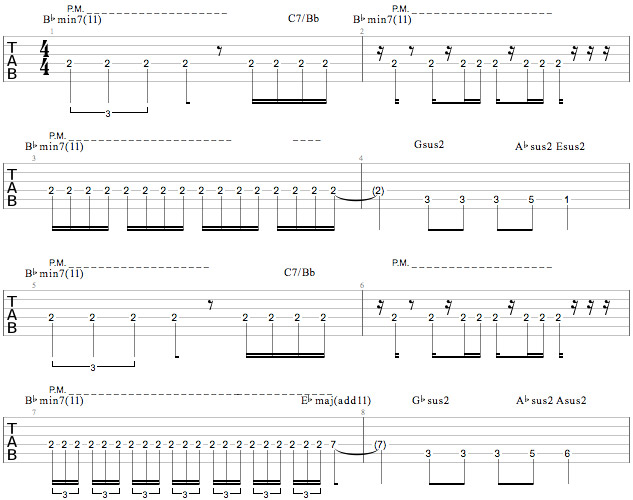
COMPOSITION: TENSIONS & EMBELLISHMENTS
Now we’ll choose tensions and licks to fill in the rhythmic riff we’ve created over the chord progression.
At this point, the framework of the riff is strong enough that you can really let your creativity fly! Try looping what you have so far and trying out different notes and licks in different places until you find some ideas that stick with you. I’ve chosen to include a b7, b5 and a 9, along with two tapping licks to further spice up the riff. Notice that I place these interesting notes very prominently in the riff, in parts of the rhythm that linger for an extended period. Also note that both tapping licks end with slides, to get the picking hand back into position near the bridge for riffing.
Bilo – Tensions & Embellishments
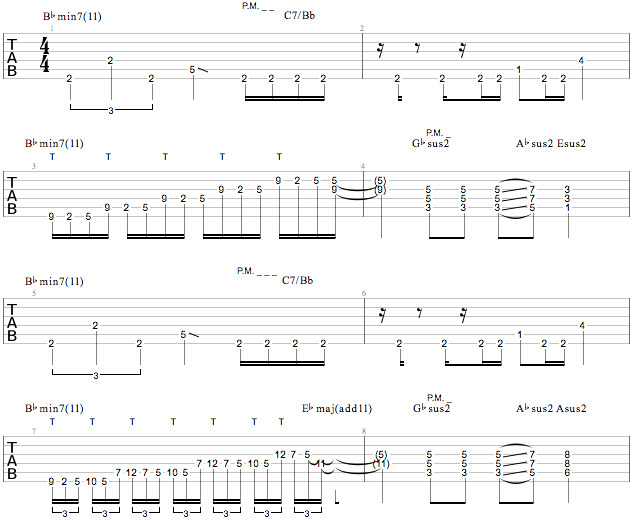
That was the final step of the writing process, but we’re not done just yet. Once we’ve created the riff and recorded it, we need to flesh out the arrangement. Adding some interesting layers under and over the riff you’ve recorded can make your music stand out in a big way!
‘LONG SENTENCE’ RIFFS
The solo section riff from the song ‘Dark Side of You’ by my band Destiny Potato is a great example of what I like to call a ‘Long Sentence’ riff.
It’s basically a long riff with some interesting syncopated rhythm structure, and a lot of space in the form of rests. It can be ugly and heavy (like this one) or it can be a more melodic type of riff. Pay as much attention to where I place the rests and the long bends as you do to the bursts of notes.
Long Sentence Riffs
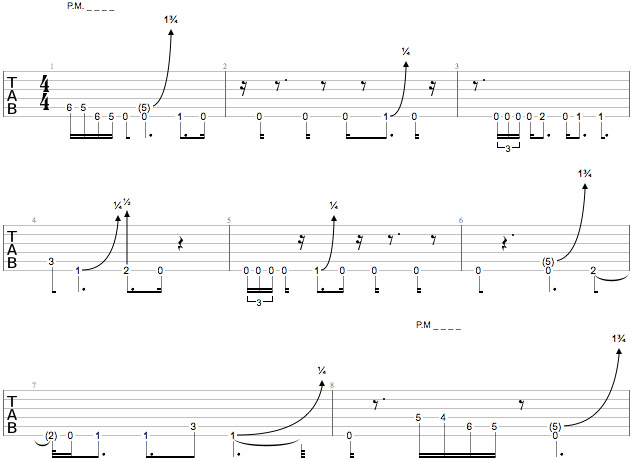
OPEN CHORDS
A nice thing about the tuning I use is that it allows for a lot of cool open chords. Here’s an example from the solo section of ‘Bilo: part III.’
For this sequence, we leave the Ab and Bb strings open on almost every chord. The functions of those two notes change with every chord that occurs beneath them, which works together with the effects I’ve applied to the guitar tone to create a dream-like effect.
Open Chords
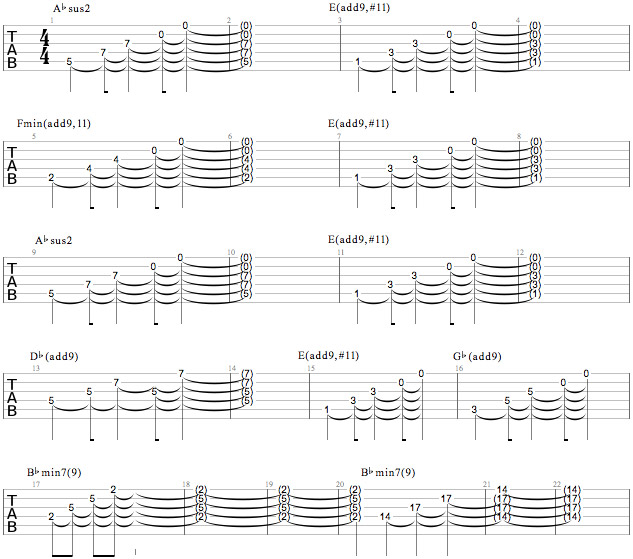
SCALES
Scales are also very comfortable to play in this tuning, because the fingerings for a given scale position are the same for each of the 5 lower strings.
Note that because standard Western scales involve 7 notes, symmetrical 3 note per string fingerings omit one of those notes. That can be an issue, but the advantage to playing scales this way is that it makes it easier to play some cool intervallic jumps and tapping licks, as I demonstrate with the solo from ‘Bilo: part III’ that I play at the end of the video. Watch and listen with arranging in mind, and pay attention to how the various layers I’ve added help distinguish the music.





